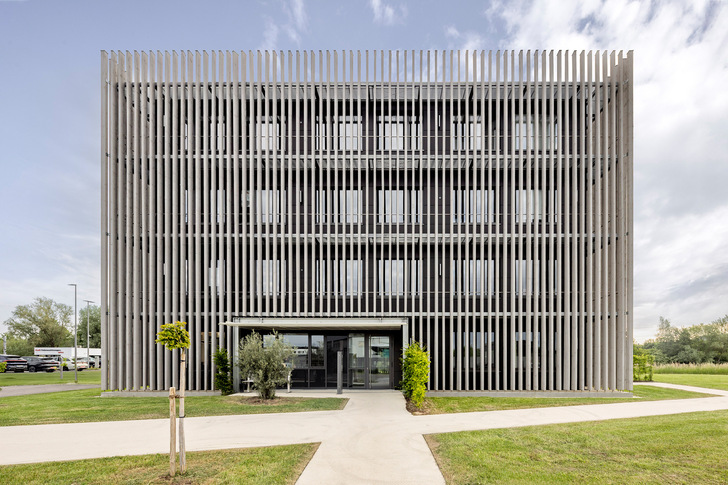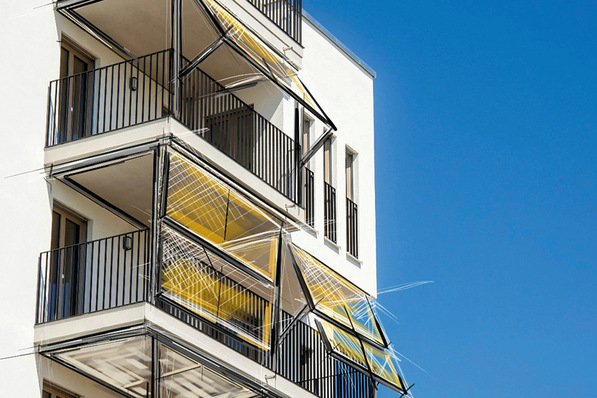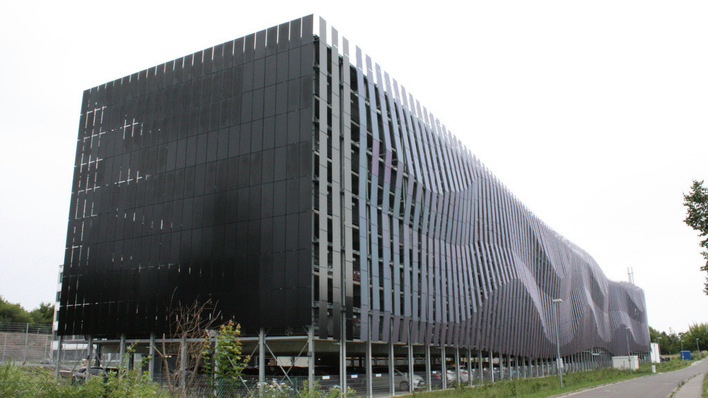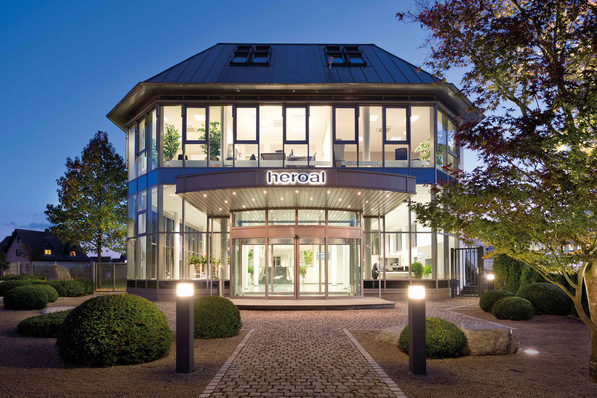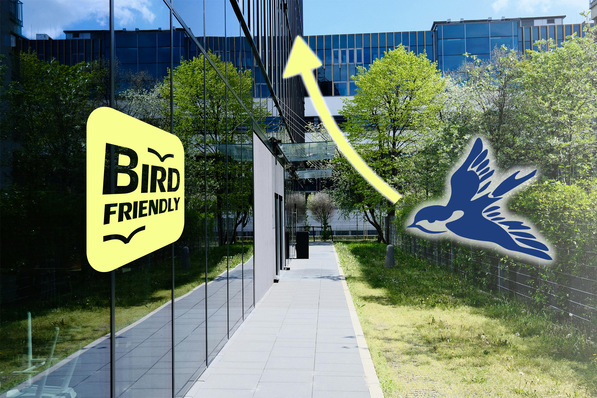On the southern edge of Donauwörth in southern Germany, in a newly developed industrial park, a four-story newbuild was completed a few months ago, which immediately catches the eye with its unusual design. Planned by Obel Architekten as their own office building, the cleanly structured cuboid with around 2000 square metres of floor space provides flexible-use offices for around 75 employees.
The architectural appearance of the newbuild is largely defined by the forward-mounted louvre-blade facade made from timber. The vertically arranged, freshly sawn, pine wood slats, each measuring 14 m long by 80 mm wide, create a lively play between light and shade and lend the building an almost sculptural feel. “At the same time, they protect the building envelope behind from direct sunlight, preventing the facade from overheating in summer and contributing towards passive cooling,” explains architect Wolfgang Obel. “The louvre blade facade also allows adequate daylight into the building and preserves the view to the outside.” Structurally, it serves as a supporting structure for the steel balconies that run behind on all levels, which also function as a secondary escape route. All of the external walls, load-bearing internal walls and intermediate floors of the newbuild are made from reinforced concrete to achieve optimised heat storage capacity. The cool night-time air stored during the summer months ensures a pleasant indoor climate during the day.
Three different ventilation options under one roof
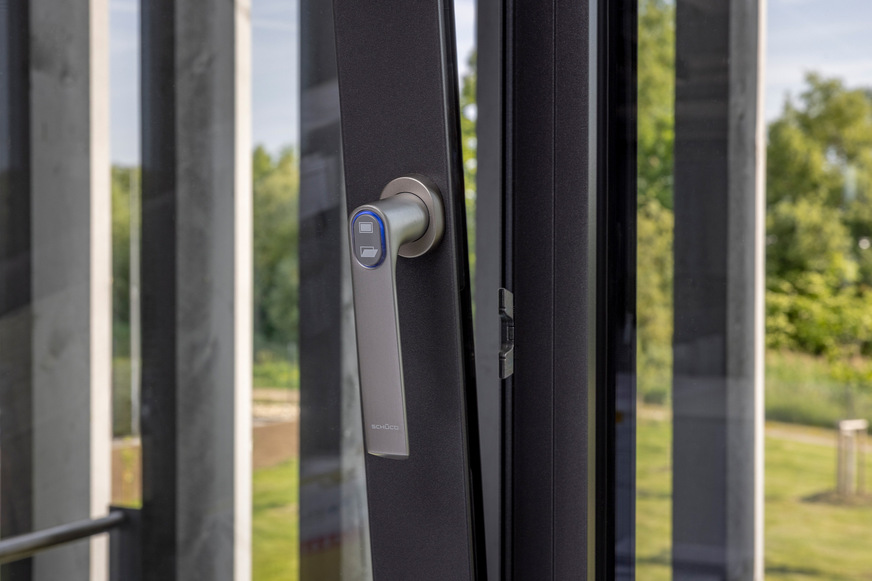
Schüco International KG
Inside the building, there is a square floor plan with a central supply core on all four levels. Carefully detailed surfaces and natural materials create a pleasant atmosphere and quiet, concentrated working environment in all of the areas. Comfort levels are further enhanced by the integration of cutting-edge concepts for ventilation, air conditioning and building management, the use of which is being scientifically evaluated here under real-life conditions. The research approach focuses on the direct comparison of three different ventilation concepts, from classic window ventilation through to the highly automated solutions that are implemented here on a storey-by-storey basis.
On the ground floor and third floor, triple-glazed Schüco AWS 75.SI aluminium windows are installed for classic, manual window ventilation, where the room climate depends on the individual ventilation preferences of the users. By contrast, the mechatronic, sensor-controlled Schüco TipTronic SimplySmart system is installed on the first floor. This solution offers a fully tested system comprising a fitting, profile system and concealed drive technology that can be integrated into virtually any Schüco window system thanks to its flexible unit sizes. A third concept is being trialled on the second floor, with the Schüco VentoTherm Twist ventilation system that is integrated in the window ensuring a controlled supply of fresh air. “This also provides heat recovery of up to 80%, which enables a considerable reduction in heating demand,” explains Henning Köln, Head of Technical Product Management for Smart Building at Schüco.
Scientific evaluation of the systems used
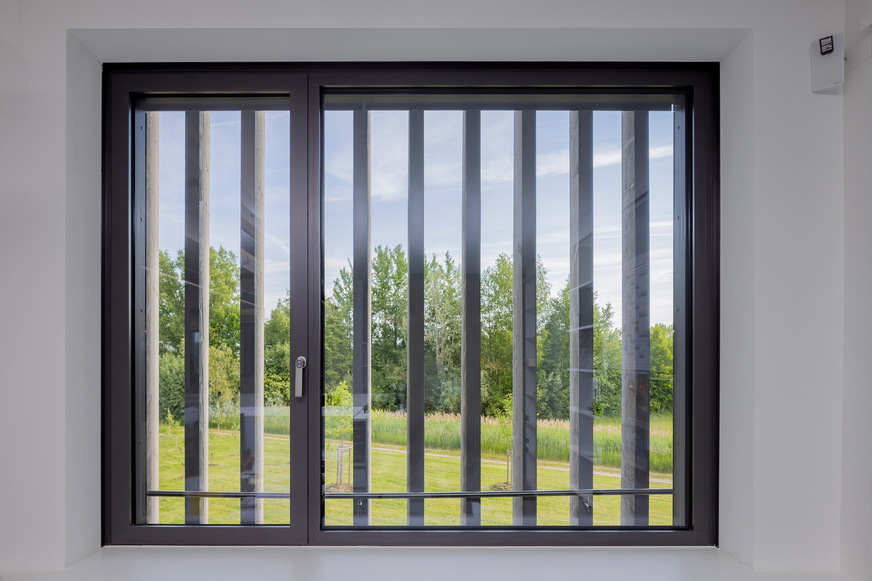
Schüco International KG
The installation of the three different ventilation systems from Schüco in Obel Architekten's new office building is not an end in itself, but offers the basis for a systematic comparison of the different systems under real-life usage conditions. “Studies like this have previously only ever been conducted in laboratories,” explains Wolfgang Obel. “In that sense, our newbuild is the first building in Germany to be able to deliver validated results under real-life conditions.”
In order to obtain a robust basis of data for this comparison, the entire building had to be fitted with a comprehensive system of sensors to continuously monitor and document the room climate, air quality, temperature fluctuations, energy consumption and user behaviour. “Cameras are used, for example, to record how many people are in a room and how often the room is occupied,” explains Wolfgang Obel. “Heat sensors close to the floor, at head height and just below the ceiling check the efficiency of the night-time cooling and its effect on the room climate.”
Assessment of the first measurement phase was carried out in collaboration with the Feuchtwangen campus of Ansbach University of Applied Sciences. As part of a Masters' thesis for the Sustainable Building Systems course, the recorded climate values were analysed and the user feedback on the different versions was collected. “The aim is to understand exactly how the different systems perform during everyday use,” says Henning Köln. “For example, what effect do open windows actually have? And how efficient is an automated system in comparison?” The results of the initial measurement phase are very promising. The air quality throughout the entire building is far higher than expected. In the next measurement phase, the plan is for particular attention to be paid to the effectiveness of night-time cooling and the calculation of the energy-related benefits of the automated systems.
Decentralised solution
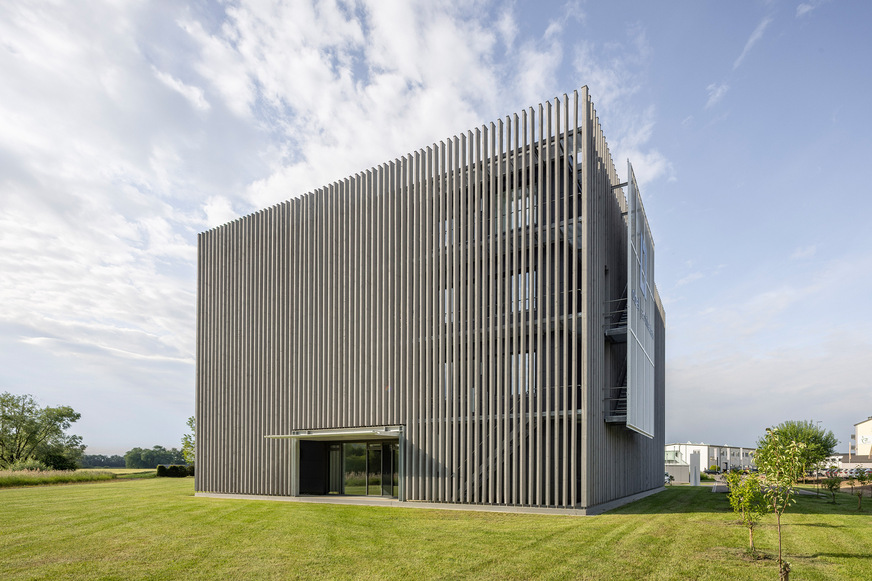
Schüco International KG
With the exception of traditional window ventilation, all of the systems used work in a decentralised way. This offers significant benefits as, unlike conventional ventilation systems, the Schüco TipTronic SimplySmart window and the window-integrated Schüco VentoTherm Twist ventilation system do not require a technical control centre or complex cable channels. This not only ensures a significant reduction in energy demand due to air transportation not being required, but also saves on space and materials, and enables the solution to be almost completely concealed. “Traditional centralised ventilation systems require large channels and often suspended ceilings to hide them in,” explains Henning Köln. “Decentralised solutions are much more compact, preserve the room height and provide architectural freedom. For renovations in particular, ventilation systems that are integrated in the window like this are often the only viable option. And if windows are being replaced, the ventilation can just be updated at the same time.”
The mechatronic windows are connected to the Schüco Building Skin Control (BSC) system. This system enables the units to be controlled and monitored and serves as an interface to the building management technology. In the event of rain or a storm, BSC also provides security, as the units are automatically closed. “Connecting the mechatronic windows and the ventilation system to the KNX-based building management technology also ensures that the air exchange rate can be automatically adjusted depending on the temperature, CO2 content and other climate data,” explains Henning Köln. As a result, a wide range of energy-saving functions such as crack ventilation, timed ventilation and night-time cooling are possible. In addition, there is an app that is directly connected to the building management system, which can be used to customise settings to adjust the flow of fresh air or other comfort parameters to suit requirements. “If, for example, someone feels unwell, the room can be optimised immediately via smartphone, or the windows can be closed by touching the button on the TipTronic handle,” comments Henning Köln.
Sustainability through system intelligence
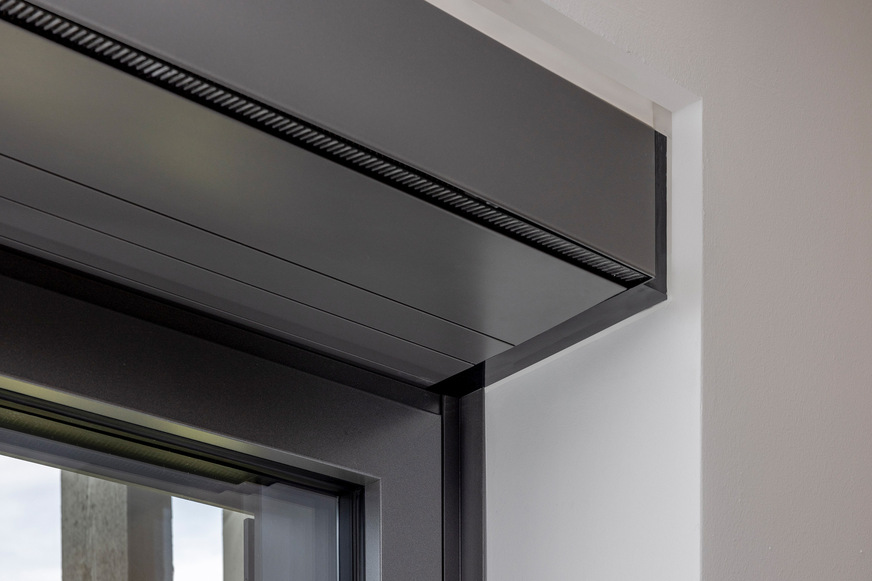
Schüco International KG
For Wolfgang Obel, the benefits of the joint project with Schüco are two-fold: in addition to the climate-related advantages for the company's own work, the experiences from their own office will also be able to directly inform how they plan and design new building projects. Schüco also benefits from the long-term data collected, which can be fed straight into its product development. Both partners want to use the results to suggest the perfect solution to suit their customers' individual project requirements.
The concept for the newbuild is supported by a sustainable energy and air conditioning system. “The energy supply for the heating and cooling is provided via geoexchange with geothermal baskets in a closed loop system and two heat pumps,” explains Wolfgang Obel. “And the power supply is mainly provided by a photovoltaic system on the roof.” All of the systems are also controlled centrally via the KNX-based building management technology, just like the ventilation. Individual adjustments can also be carried out easily and conveniently via the app. The combination of the architecture and innovative building management technology has created a highly efficient building, which can be regulated in an effective, convenient and user-friendly way all year round using simple yet very durable and resource-conserving building components. To the benefit of the employees and the environment in equal measure.
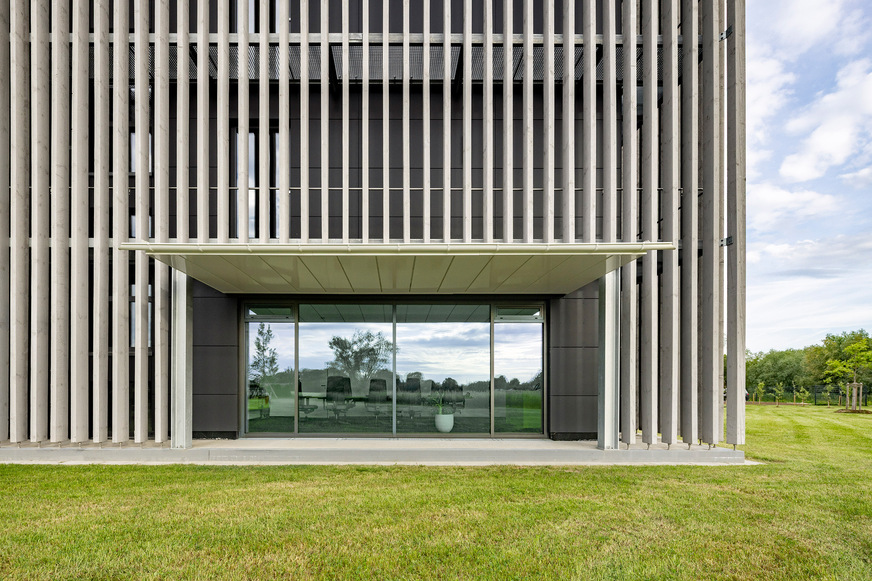
Schüco International KG







